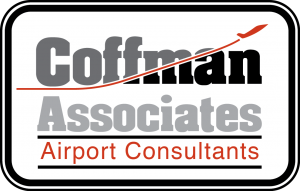Looking Back Over 40 Years
by Steve Benson, Senior Consultant
Hard to believe it has been 40 years since I left a national engineering firm to go to work in Steve and Jeanette Coffman’s basement for a newly incorporated airport planning firm. I suppose I was just young and naïve at the time, but I was excited about this new venture and leap of faith. Most did not expect the firm to last five years, let alone 40—but we have, through various trials and tribulations. Our main goal has always been to provide our clients with the most objective airport planning through our love of airports, with no backloaded interest in follow-on design fees. Though the people have changed over the years as we’ve grown, our core premise remains the same: “To provide airport proprietors and other aviation clients with airport planning and environmental services in support of the sustainability and growth of their facilities.” It’s just one of the many reasons I’ve stuck around so long.
…I was excited about this new venture and leap of faith.
Looking back on these 40 years, I’ve found the changes in airports and aviation to be very interesting. In 1979, general aviation was flying high on an influx of pilots thanks to many getting their training and licenses through the GI Bill. However, a recession in the early 1980s took a toll, as well as the skyrocketing costs to own and operate an aircraft. The private pilot and general aviation industries continued to take hits through the years, particularly with each recession. Today, business flying is the strength of the industry, but private GA pilots are still important to its sustainability. Sport and experimental aircraft are a means for some individuals to keep their ties to flying.
The Airline Deregulation Act of 1978 was signed by President Carter just six months before Coffman Associates was formed. Over the next several years, the race to the top was on within the air carrier passenger industry, as the major mainline carriers focused on grabbing market share. Large hub airports took the lead, and the fad worked itself down. Deregulation spurred new start-ups, especially among low-cost alternatives. It also opened opportunities for new airports such as Laughlin-Bullhead International, which Coffman Associates had the pleasure of planning first in the 1980s.
Over the next several years, the race to the top was on…
The overall cost of flying for the consumer declined, but smaller airports took a hit. Many had mainline jet service replaced by smaller regional turboprops, and many fell below the 10,000-enplanement threshold necessary to be considered a primary airport for FAA entitlement funds.
The regional jet eventually evolved to help fill in the gap. Would it be the hope for the small communities? I was told at the time by an airline executive that it was only viable on long, thin routes. When fuel costs rose, that began to prove true. By the mid-2000s, however, regional jets were showing up in smaller markets with potential for growth. There were success stories, such as in Santa Fe, where a Coffman Associates master plan saw potential several years before it occurred. Within a few years, airlines began to bid on Essential Air Service contracts with regional jets, and small communities experienced a renaissance in passenger traffic not seen since the 1970s.
The 50-seat regional jets are still pricey to operate, especially coupled with high fuel costs and pilot union agreements on aircraft size. In fact, they are no longer being manufactured, and the current fleet is anticipated to run out of useful life by the 2030s. While the stronger markets are growing into the 60-plus seat regional jets, there is some hope for the other small-market communities. The industry has developed a 50-seat version of the 70-seat jet, which was put into service this fall. Over time, the industry simply adjusts to the market.
Over time, the industry simply adjusts to the market.
Noise has been a negative impact on airports since the first commercial jets took to the skies in the early 1950’s. As the problem of noise around airports increased, the FAA issued the Aviation Noise Abatement Policy (ANAP) in 1976. Coffman Associates was involved in some of the earliest Airport Noise Control and Land Use Compatibility studies funded by the FAA at airports across the country. With the nudge of federal regulations, the industry began to make quieter aircraft. In 1979, the MD-80, advertised as the “whisperjet,” was noticeably quieter than its predecessors. Today, the last MD-80s are being retired as perhaps the loudest and least fuel-efficient mainline passenger aircraft still in operation. Now, aircraft noise hasn’t just disappeared; the noise sensitivity of airport neighbors will always change or raise as new generations, who haven’t experienced the same levels of noise, move in near airports.
Though aircraft have become much quieter, air quality has become the main issue for airport protesters. Just recently, a protester glued himself to the top of a large passenger jet in the name of climate change! Environmentally conscious celebrities ironically jet around the world to attend climate change conferences and protests. Whether you are a climate change proponent or skeptic, making airports sustainable in a fiscally and environmentally responsible manner is not only good for airport neighbors and the planet, but also for airports.
In 40 years, airports have changed, but in some ways, things are still the same. Airports and the aviation industry have been through a lot over the years, but they have persevered in making the world more accessible. I am proud of all that we at Coffman Associates have contributed to help make that happen. I look forward to the next forty years and seeing how airports and we as planners continue to sustain and adapt to the challenges.
